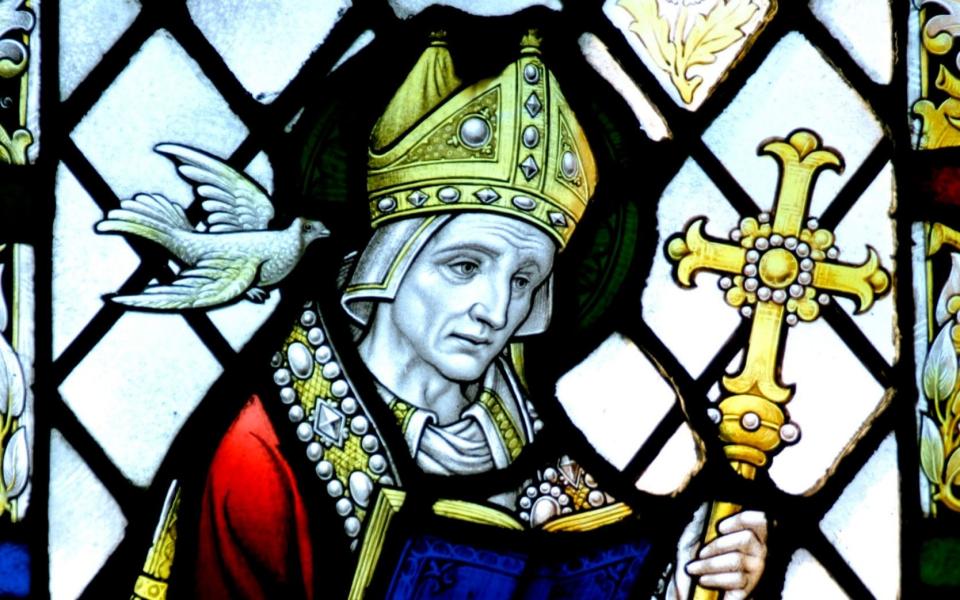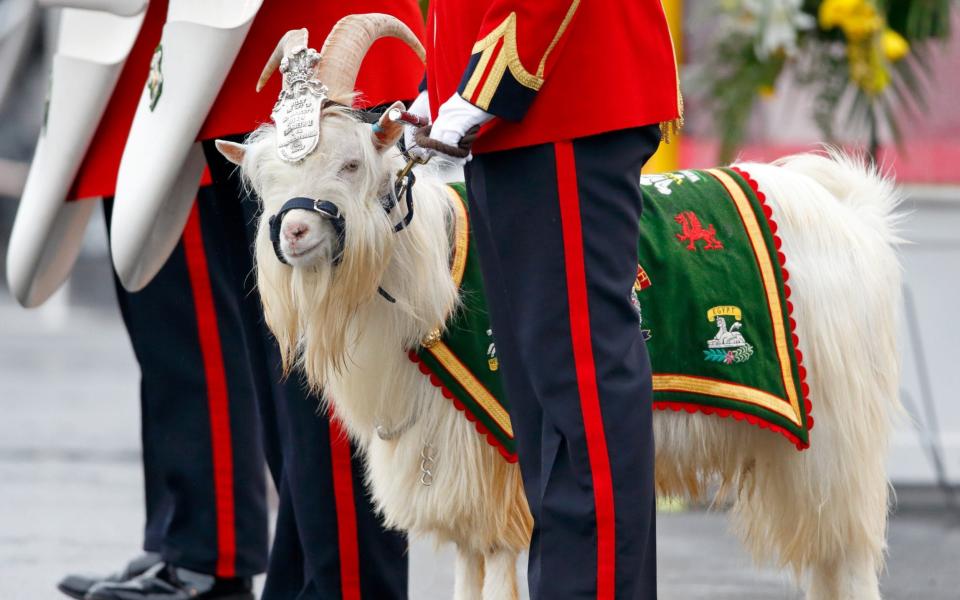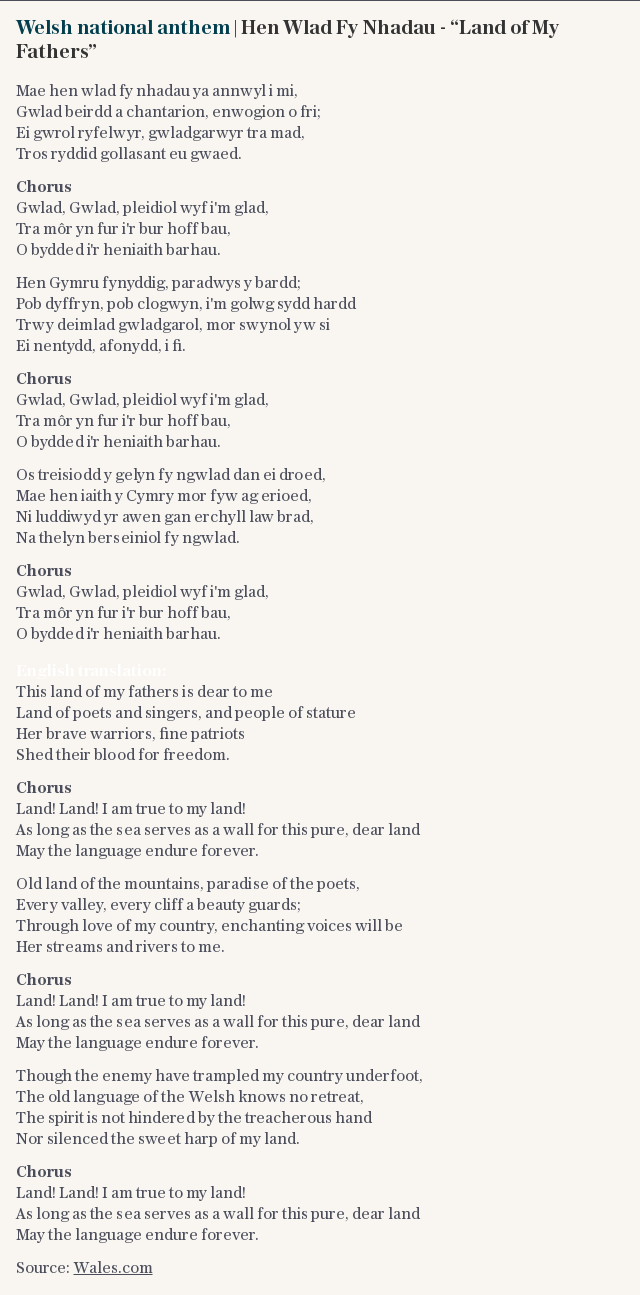St David's Day 2020: Welsh traditions, medieval miracles and how leeks became an iconic symbol

St David's Day is fast approaching, with daffodils beginning to bloom and celebrations in honour of the Welsh figure set to take place tomorrow.
Recognised annually since the 12th century, the Welsh occasion is the first day of the year we Britons celebrate one of our patron saints and marks the date of St David's supposed death in 589 AD.
But why are leeks, doves and daffodils tied to the event and how is the day celebrated by the Welsh nation? Here is everything you need to know about St David's Day.
When is St David's Day?
St David's Day, the patron saint day of Wales, falls each year on March 1, with a range of celebratory events taking place and the country's national flag flying more than usual. Want to say 'Happy St David's Day' in Welsh? It's Dydd Gŵyl Dewi Hapus - pronounced Deethe goo-eel Dew-ee happ-iss. Easy!
Who was St David?
St David is the patron saint of Wales - as well as the patron saint of doves. Also known as Dewi Sant in Welsh, he was born in Caerfai in Pembrokshire, Wales to Sant, a prince of Cardigan, and St Non, the daughter of a chieftain in around 500 AD. He was recognised as a national patron saint at the height of Welsh resistance to the Normans.
St David studied under St Paulinus in Cardigan before he went on pilgrimages, travelling to Wales, Cornwall, Britanny, Ireland and Jerusalem, where he was made an archbishop.
He helped to spread the word of Christianity, and he founded around 12 monastaries in his lifetime. He also helped to suppress Pelegrian heresy, where people believed that original sin did not taint human nature and people are capable of choosing good or evil without divine aid.
Monastaries founded by him were known for their extreme asceticism, where monks abstained from worldly pleasures, living on a diet of bread, vegetables, water and milk. They also did all of the hard labour themselves, including farming without the aid of an ox to plow the fields.
While little is known about St David's life, he is known for performing miracles. His most famous miracle was when he was preaching to a large crowd at the Synod of Brefi and raised the ground beneath him into a hill so his sermon could be heard by all.
He also miraculously lived after eating bread poisoned by monks at his monastery, who tired of their life of austerity, as well as restoring the sight of his tutor, St Paulinus.
In medieval times, St David was thought to be the nephew of King Arthur. In some stories, it is his mother who was the niece of King Arthur. Legend also says that St Patrick foresaw David's birth.

During St David's last sermon his words to his followers were: "Be joyful, and keep your faith and your creed. Do the little things that you have seen me do and heard about. I will walk the path that our fathers have trod before us."
"Do the little things" has become a well-known inspirational saying in Wales.
St David is thought to have died on March 1, 589 AD, and his remains were buried in St David's Cathedral in Pembrokeshire, which was a popular place of pilgrimage after he was canonised in 1120 AD.
His shrine was removed by Vikings in the 10th and 11th centuries, and a new shrine constructed in its place in the 13th Century.
Making two pilgrimages to his shrine at St David's Cathedral is thought to be equivalent to a pilgrimage to the Vatican, while three are equivalent to a pilgrimage to Jerusalem.
St David has been patron saint of Wales since the 12th century - he was canonised by Pope Callixtus in 1120. Of the patron saints of the British Isles, only St David and St Patrick had visited the country they are the patron saint for.
St Patrick was a Romano-British missionary, St George was a Roman soldier of Greek extraction and St Andrew was from Palestine.
What are the symbols and images associated with St David?
The flag of St David is a yellow cross on a black background. On St David's Day, the flag of St David and Y Ddraig Goch (the Red Dragon, Wales' national flag), will be flown more than usual.
Images of St David often depict him on a hill with a white dove on his shoulder. The dove represents the Holy Spirit which gifted St David with eloquent speech when he preached. Some stories say the dove is depicted because a love landed on his shoulder on the day he miraculously raised a hill to preach.
People often wear leeks in remembrance of St David's guidance during the battle against the Saxons when, supposedly, St David advised Welsh warriors to wear a leek during a battle with the Saxons, so enemies and allies could be distinguished. They won the battle and leeks became a Welsh symbol.
Is St David's Day a public holiday?
No. While St Andrew's Day in Scotland and St Patrick's Day in Ireland are public holidays, St George's Day in England and St David's Day in Wales are not.
In 2007, Tony Blair rejected calls for St David’s Day to become a bank holiday, despite a poll revealing that 87 per cent of Welsh people wanted a March 1 holiday.
School children used to be given a half-day holiday, and in some parts of Wales, this tradition continues.
How is St David's Day celebrated?
The 17th century diarist Samuel Pepys noted how Welsh celebrations in London for St David's Day would spark wider counter-celebrations among their English neighbours, with life-sized effigies of Welshmen being symbolically lynched.
By the 18th century the custom had arisen of confectioners producing "Taffies" – gingerbread figures baked in the shape of a Welshman riding a goat - on St David's Day. These days, St David's Day is celebrated mainly in Wales or large populations of Welsh expats living outside the UK.
People celebrate St David's Day by wearing a daffodil, the national symbol of Wales, or a leek, St David's personal symbol.
In Wales people, particularly children, wear traditional Welsh costumes. Girls wear a petticoat and overcoat, made of Welsh flannel, and a tall hat, worn over a frilled bonnet.
Boys wear a white shirt, a Welsh flannel waistcoat, black trousers, long wool socks and black shoes. The outfits originated during the 18th and 19th centuries.
Children in Wales enjoy traditional Welsh dances, sing Welsh folk songs and recite Welsh poems, and take part in school concerts, or eisteddfodau.
Welsh regiments in the British army traditionally eat raw leeks on March 1 to celebrate their patron saint. In 2017, the Queen gave leeks to the soldiers of The Royal Welsh to mark St David's Day at Lucknow Barracks, as well as to one of the Regimental Goats of the Royal Welsh.

A long line of goats have been recruited by the regiment since 1844, when Queen Victoria presented the Royal Welsh Fusiliers with its first official Royal goat.
The Regular and Reserve battalions have always recruited a goat from the Royal herd at the Great Orme, Llandudno, and the goats have a host of official duties, including leading the 1st Battalion The Royal Welsh on all ceremonial duties and leading parades.
St David's Day 2020 events
From parades and walks to Welsh cuisine, an array of events are held every year to honour the patron saint of Wales.
Kicking off this year's celebrations, the annual St David's Day Dinner took place on February 26 at Guildhall, London, in support of the Wales in London Philanthropic Fund and Community Foundation in Wales.
The Croeso Festival is also set to take place in Swansea on February 29 and March 1, with live music, cooking demonstrations, workshops, arts and crafts and the St David's Parade.
Elsewhere, two St David's Day Walks will be held in London on February 29 and March 7, while the St David's Day Run is set to take place in Cardiff on March 1.
Welsh cakes recipe
These little icons of the Welsh table are delicious as they are, spread with butter, or served with a couple of leeks and a little cheese for a savoury teatime treat. Welsh cakes can be eaten any day of the year, but also form part of the St David's Day celebrations.
Diana Henry reveals how you can make the perfect Welsh cakes.

What else to cook on St David's Day
Leek and roasted-sweet-potato soup with Welsh-rarebit croutes
This delicious vegetable soup is finished with crispy leeks and served with mustardy cheese toast.
Another Welsh classic, perfect for those who love cheese. Though traditionally served after the main course, the comforting dish can be enjoyed at any time of the day.
This traditional Welsh dish, packed with luxury dried fruit and finished with sticky marmalade, is the ultimate afternoon tea treat.
Glamorgan sausages with fruity brown sauce and winter slaw
Enjoy these leek and Caerphilly sausages with a spoonful of home-made sauce and slaw.
What are the lyrics to Hen Wlad Fy Nhadau, the Welsh national anthem?
Hen Wlad Fy Nhadau, translated as ‘Land of my Fathers’, was written in 1856 by Evan James and his son, James James, from Pontypridd.
Welsh rugby and football crowds are regularly heard singing their national anthem before international matches.
The first recorded occasion of the anthem being sung at an international sporting event was in 1905, at a rugby match between Wales and New Zealand at Cardiff Arms Park.
Here are the lyrics, in Welsh, followed by an English translation.

The Welsh around the world
Welsh expats can be found around the world. Many have emigrated to the United States, in particular Ohio, Idaho and Pennsylvania.
155 years ago, on July 28 1865, more than 150 Welsh-speaking men, women and children landed at what is now Puerto Madryn on the Atlantic coast of Argentine Patagonia. They had sailed in May from Liverpool on the Mimosa, a converted tea clipper, with the intention of establishing a community, where they could practice their language and faith free from the dictates of “English” government.
Patagonia, their leaders had assured them, was much like the green and fertile lowlands of Wales. In truth, it was a hard, inhospitable place where water was hard to come by and there were no trees to fell for fuel or building.

